As you get older, the way you approach life changes.
You have more wisdom than you did when you were a young man from all your years of experience—but in some settings, like the gym, you’ll need to adjust your behavior to keep up with the changes that happen to your body when you age. That’s why men over 40 should take a slightly different approach to fitness than their younger peers, with an emphasis on careful, calculated programming.
The Men’s Health Muscle After 40 book gives you that smart, measured plan you need for your workout as an older man.

Men’s Health
Order Now
The 12-week fitness guide doesn’t give you handicapped workouts with instructions to play it safe—the plan is designed to bring out the best in you while allowing you to rest and recover within your body’s capacity. Muscle After 40 is split into 3 distinct phases, each of which consist of 3 weeks where you’ll train 3 times.
This is Phase 2, Week 1. Check out Phase 1, Week 1 here.

Hero ImagesGetty Images
Overview
You’ll train four times per week for four weeks, working the upper body on Day 1 and Day 3, and the lower body on Day 2 and Day 4. It’s set up for a Monday-Tuesday-Thursday-Friday workout schedule, but if you find that back-to-back workouts leave you too sore or fatigued to get the most out of both workouts, it’s fine to add a day of rest. It’s always better to listen to your body, even if you need an extra week to finish the phase.
Some exercises will be unfamiliar. Embrace the novelty, and don’t put any pressure on yourself to hit any particular performance standard. Some of the exercises require lightweights, while on others you’ll want to master the form before you get aggressive with the load.
Weight Selection
Most of the movements are now combined into antagonist pairings—two exercises that work opposing muscles—biceps and triceps, for example, or chest and back. You’ll do the exercises in each pairing as alternating sets—a set of A1, rest, a set of A2, rest, etc., until you finish all the prescribed sets for that particular pair. Then you’ll move on to B1 and B2 and complete the sets in that pair, and so on.
You’ll only use the sets across method for the A1 exercise in each workout. Remember the difference: With sets across, you use the same weight for every set, and only increase it when you reach max reps in every set, with reps left in the tank on most sets. On the other exercises, increase the weight when you can exceed the rep range for 2 or 3 reps.
Rest
With the antagonist pairings, you can start the second exercise whenever you’re ready, but it shouldn’t be immediately after you put down the weights from your first exercise. You should do the first one with enough effort that you need at least a few seconds to catch your breath.
The Workout
Week 1, Day 1
A1. Dumbbell Standing One-Arm Shoulder Press with Neutral Grip

Men’s Health
A2. Lat Pulldown
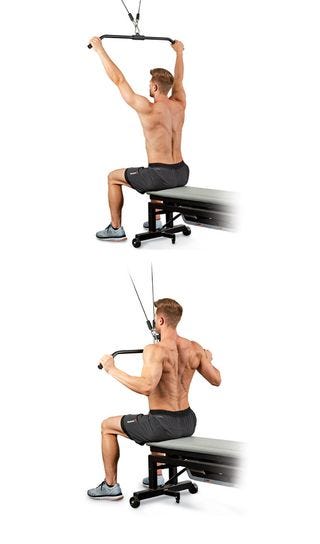
Men’s Health
B1. Dumbbell Bench Press with Neutral Grip

Men’s Health
B2. Dumbbell One-Arm Row
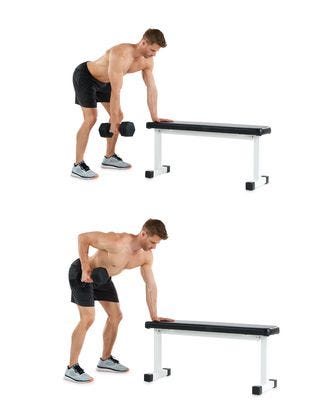
Men’s Health
C. Lateral Raise

Men’s Health
D1. Hammer Curl

Men’s Health
D2. Dumbbell Overhead Triceps Extension
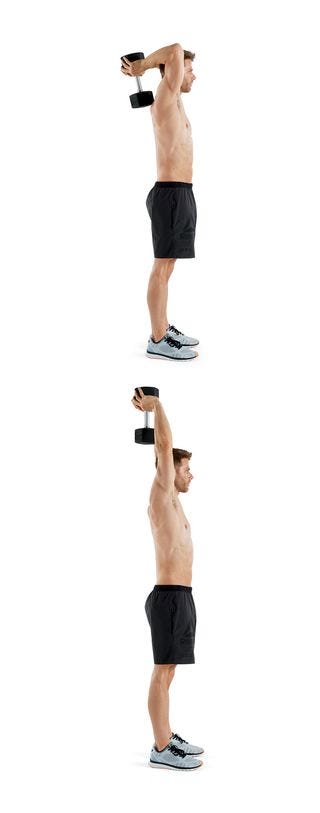
Men’s Health
Week 1, Day 2
A. Barbell Front Squat
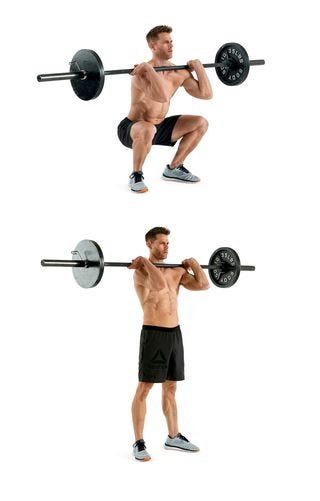
Men’s Health
B1. Dumbbell Split Squat

Men’s Health
B2. Lying Leg Curl

Men’s Health
C1. Ab Wheel Rollout
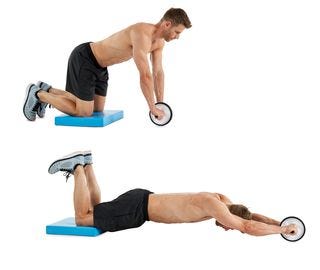
Men’s Health
C2. Standing Calf Raise
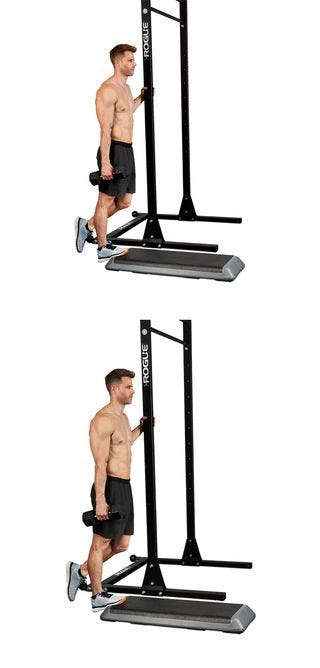
Men’s Health
Week 1, Day 3
A1. Dumbbell Incline Bench Press

Men’s Health
A2. Dumbbell Incline Chest-Supported Row
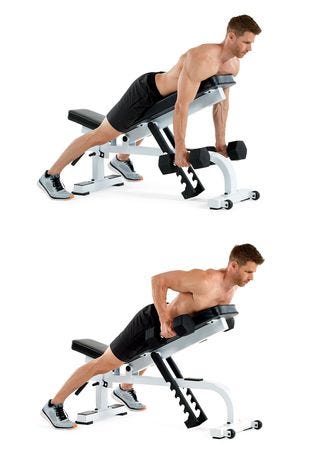
Men’s Health
B. Half-Kneeling One-Arm Angled Press
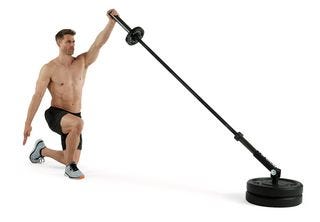
Men’s Health
C1. Dumbbell One-Arm Incline Lateral Raise

Men’s Health
C2. Dumbbell Rear-Delt Raise
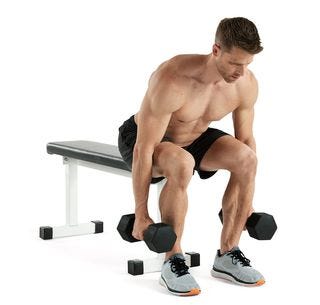
Men’s Health
D1. Incline Hammer Curl
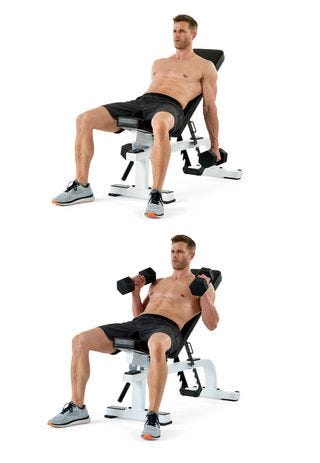
Men’s Health
D2. Dumbbell Incline Triceps Extension

Men’s Health
Week 1, Day 4
A1. Rack Deadlift

Men’s Health
A2. Dumbbell Reverse Lunge
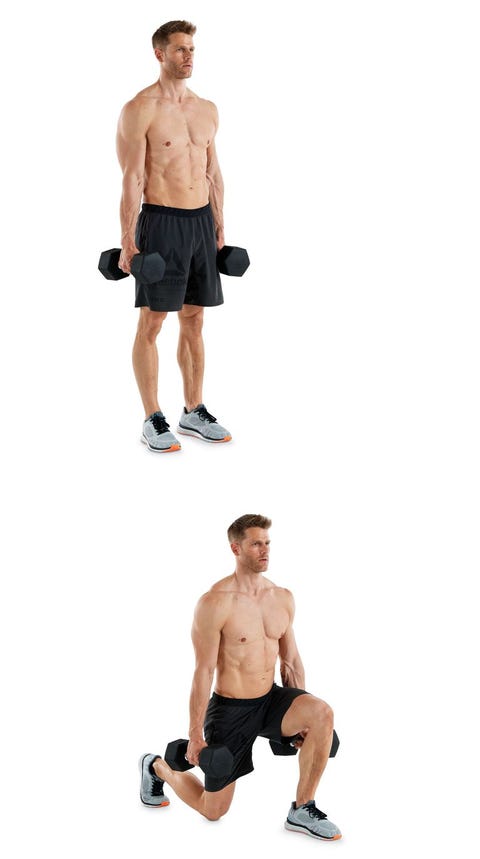
Men’s Health
B. Leg Press
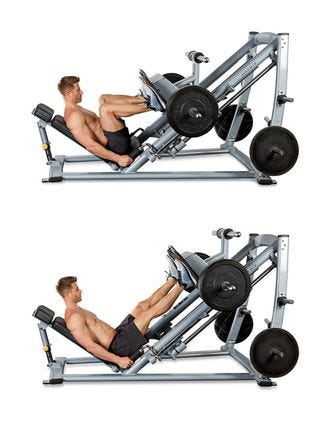
Men’s Health
C1. Seated Calf Raise
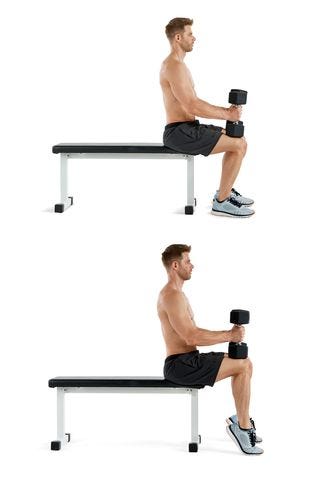
Men’s Health
C2. Bench Kneeup
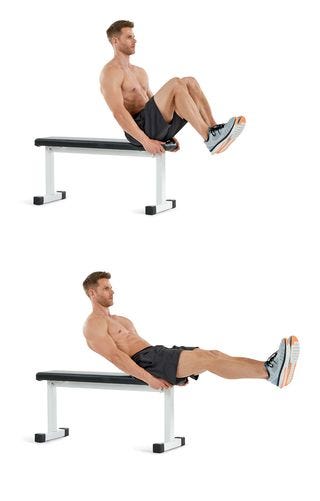
Men’s Health
Source: Read Full Article
